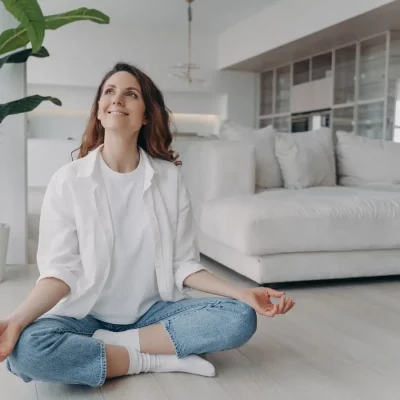Looking for a way to build emotional resilience and reclaim your life meaning may be a challenge too hard to take alone. This article will give you some ideas that can support you on the go.
What is emotional resilience?

Your emotional resilience is your ability to adapt to stressful situations and crises, maintaining psychological health in the face of adversity. With emotional resilience, you can adjust and work through tough situations, big and small. This trait is not about avoiding difficulties, it is about bouncing back and growing stronger from them. Here, we explore the nature of emotional resilience, its benefits, and strategies to cultivate it.
One more argument on taking an interest in reclaiming your power and building emotional resilience can be found in an article published in “The Journal of Personality and Social Psychology” curated by the American Psychological Association. The article indicates that when you are resilient, you “bounce back” from stressful experiences quickly and effectively.
Establishing your emotional resilience will bring multiple benefits of different kinds:
- Improved mental health
- Reduced anxiety and depression. As soon as you start working on your emotional resilience, you will be better equipped to manage stress, leading to lower levels of anxiety and depression. They can navigate life’s challenges without becoming overwhelmed, maintaining a stable emotional state.
- Enhanced coping mechanisms. Emotional resilience provides you with effective tools to handle stress and adversity. This leads to healthier coping mechanisms, such as problem-solving and seeking social support, rather than resorting to negative behaviors.
- Increased self-esteem. An ability to overcome obstacles will support you in building emotional resilience. This positive self-perception will reinforce your confidence in reclaiming your power.

- Increased productivity and performance
- Focus and efficiency. Being a strong and emotionally resilient person, you will maintain focus and productivity even under pressure. You are less likely to be derailed by stress, enabling them to stay on task and complete their work efficiently.
- Goal achievement. By setting realistic goals and maintaining a positive outlook, when you are resilient, you are more likely to achieve your objectives. Your ability to bounce back from setbacks ensures you stay on track toward your aspirations.
- Innovation and creativity. Emotional resilience promotes a mindset open to new ideas and approaches. You are more willing to take risks and think creatively, leading to innovative solutions and continuous personal and professional growth.
A positive effect of your new skill may also involve:
- Enhanced physical health: stress reduction, healthier life choices, and better recovery from illnesses,
- Stronger relationships: better conflict resolution, faster network building, and more effective communication.
- Overall life satisfaction: increased adaptability, emotional balance, and positive outlook on life will bring you new acquaintances and experiences, and help you to reclaim your happiness.
5 steps to increase your emotional resilience
- Set realistic goals and take action
Define clear goals. Set specific, measurable, achievable, relevant, and time-bound (SMART) goals. Having clear objectives gives you a sense of direction and purpose. Take small steps by breaking your goals into smaller steps and focus on achieving them one at a time. Be prepared to adjust your goals and plans as needed. Life is unpredictable, and flexibility allows you to adapt to changing circumstances without losing sight of your overall objectives.
- Enhance your problem-solving skills
Break problems down. When faced with a large problem, break it down into smaller, manageable parts. Start with something you can certainly accomplish. Focus on tackling one piece at a time, which can make the overall challenge seem less daunting. Explore solutions by brainstorming solutions to a problem and evaluate the pros and cons of each. Remember to apply the past experience by reflecting on past challenges and consider how you overcame them.
- Cultivate a positive outlook
Reframe illogical thoughts. When you catch yourself thinking negatively, try to reframe those thoughts in a more positive light. For example, instead of thinking, “I can’t do this,” try, “This is a challenge and I can find a way to overcome it”. Spend a few minutes each day visualizing successful outcomes to the challenges you face. This can help build confidence and reduce anxiety about the future. Practice gratitude by regularly reflecting on the things you are grateful for. Yes, as Oprah Winfrey once said, being grateful all the time isn’t easy. Yet, you certainly can name at least 5 such things every morning.
- Develop healthy coping mechanisms
Engage in physical and other activities. Find a physical activity you enjoy, whether it’s jogging, yoga, dancing, or something else, and make it a part of your routine. It can also include mindfulness and meditation techniques of different kinds. Engage in activities that bring you joy and relaxation. Creative pursuits like painting, writing, or playing music can provide an emotional outlet and reduce stress.
- Build strong relationships
Nurture existing relationships. Start from what you already have. This will link you to gratitude practices as well. Make time for the people who matter to you. Regularly check in with friends and family, and be open to both giving and receiving support. As soon as you feel confident in your existing relationships, start expanding your social network. Join clubs, groups, or communities that interest you. Meeting new people with shared interests can provide additional support and broaden your perspective. And wherever you go, be a good listener. Show genuine interest in others’ lives and experiences. Active listening strengthens bonds and creates a supportive environment.
Invest in your mental health
Building emotional resilience is an investment in your long-term mental health. The skills and insights you gain from online therapy not only help you navigate current challenges, they also equip you with the emotional resilience to handle future adversities. It’s a proactive step towards leading a healthier, more balanced life.
Take the first step to emotional resilience today

If you’re ready to build your emotional resilience, consider reaching out to a Makin Wellness therapist. Online therapy is not a sign of weakness; it’s a courageous step towards taking control of your mental and emotional health. By addressing your challenges head-on and developing the skills to overcome them, you can transform your life and thrive in the face of adversity.
Remember, it’s okay to ask for help. Seeking online therapy is a healthy, and empowering choice that can lead to lasting change. Embrace the journey of building emotional resilience and discover the strength within you.
Contact our care team at (833)-274-heal or click here to get started today.








